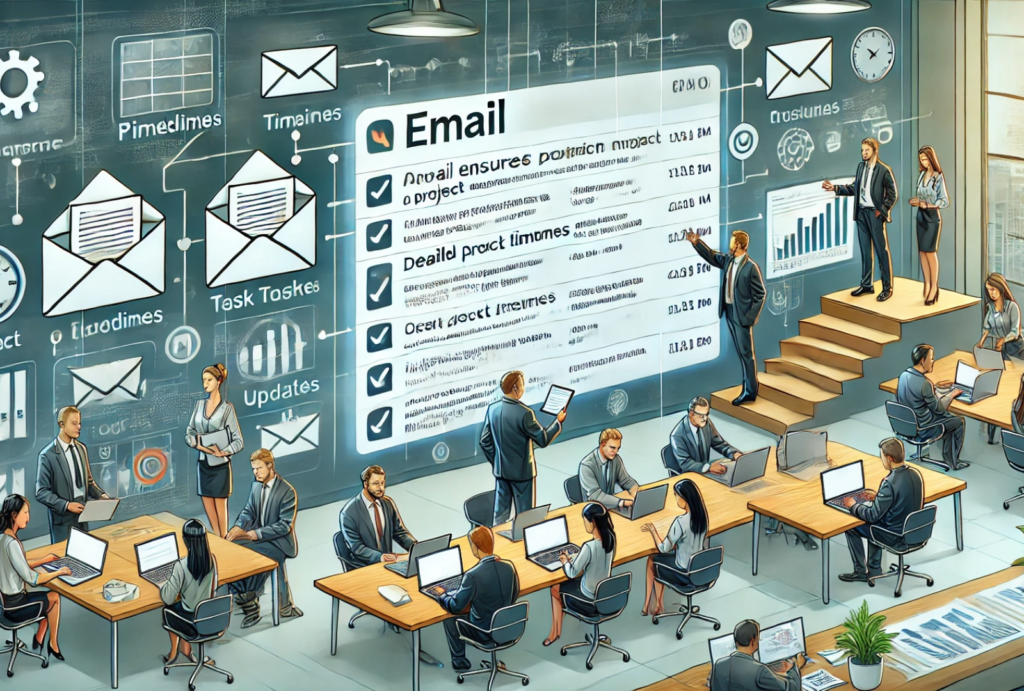We’ve all had to surmount project communication challenges at some point in our job functions. We are in a world of globally dispersed teams where we sometimes never get to see each other. Naturally, email communication is often deemed a convenient method to get messages across without having to work around team schedules. However, a badly written email can put a project into a downward spiral quickly because the messaging was ambiguous.
I’ve seen many well meaning project leaders struggle in three particular areas of email communication, and I’ve included my thoughts on how to avoid these pitfalls.
Do not inundate with email. If you bombard your team with myriad emails, it makes you look disorganized and also clogs up their inbox unnecessarily. Less is more. Consolidate your thoughts into fewer emails and they will get a lot more attention.
The rest is history? I’ve seen some people include the entire history of the project while writing up weekly status, including past action items that have been completed, past decisions, project plan changes over time, etc. Wrong (IMHO)!
Long lists covering all this history makes people gloss over the details. On a long-running project, this is a disaster waiting to happen. If you must include said history, and if the situation allows, include only what has changed between your last communication and this one. You can relegate really old items to the bottom of the email, or to some external location such as a WIKI page or document that you can refer to in your email.
Make your messaging to-the-point.
- Be sure to include a specific subject line, and in the body of the email include a short description of what you are trying to convey before you go into the gory details. This sets the stage and prepares the reader for the specifics of the email.
- Verbose paragraphs will either cause people to just save the email for reading later, or to skim the contents of the email and make incorrect assumptions. Use short bulleted lists and break them up into sections, making sure to point out action items and next steps.
What advice do you have to offer to avoid other email pitfalls such as these? I’d love to hear more on the topic.


Thx Rashmi. These are all great ways to ensure effective communication.
I typically follow these norms in the emails:
1. Bulleted or numbered points (which is already mentioned)
2. Use of colors – yes! If its a risk or alert that I want my team members to look at and act immediately – I make it “bold red” and sometimes caps. I have observed that color coding always works as human eyes get attracted to colors immediately.
3. Neat formatting and use of readable fonts (like Arial, Verdana). I hate reading stuff in “Times new Roman” font!
4. Use of inline screen shots and diagrams wherever possible. This specially works if you are managing team remotely. A Picture is worth thousand words and saves lot of prose explanation in email.
Kimberly, I completely agree. It takes very little time to set up a project dashboard and link in all the associated documentation in a WIKI (if your company does not want to go all out for the more expensive enterprise software that’s out there). And what a difference that makes to the project! If you can come up with a standard project template and setup lightweight process around it, it’ll do your project and the sanity of your team a lot of good.
Yes, right on, Anuradha! I just won’t be able to sleep at night unless I add . . . email is just about the worst way to communicate in the entire world. And yet most project leaders over-rely upon it due to convenience. Face-to-face rocks, video teleconference is pretty cool, phone is OK if you can’t get to a Starbucks to sneak a Skype call (Yes, I know all about the IT objections to such things). And project details should not be strewn all over email, they should be neatly organized on a wiki that the entire team can easily access and contribute to. It’s not so easy to get people to adopt new tools and technologies, as I wrote about in the most recent Project Connections newsletter. Check it out here if you want to share my pain: http://blog.projectconnections.com/kimberly_wiefling/2009/12/kollaboration-is-killing-me.html
Thx Josh. Yes, absolutely. Making sure you draw attention to the key points is the way to go. People tend to get many emails a day, and trying to stay on top of the email load, while getting through meetings and then a work backlog, is challenging at best.
Being a blogger and writer has made me better at communicating through email too.
Bulleted lists in email is great as you said already.
Another important point is to use bolding and/or headings like you demonstrate in this blog post. Calling attention to the most important things helps focus people and ensure your message gets across.
Josh Nankivel
pmStudent.com